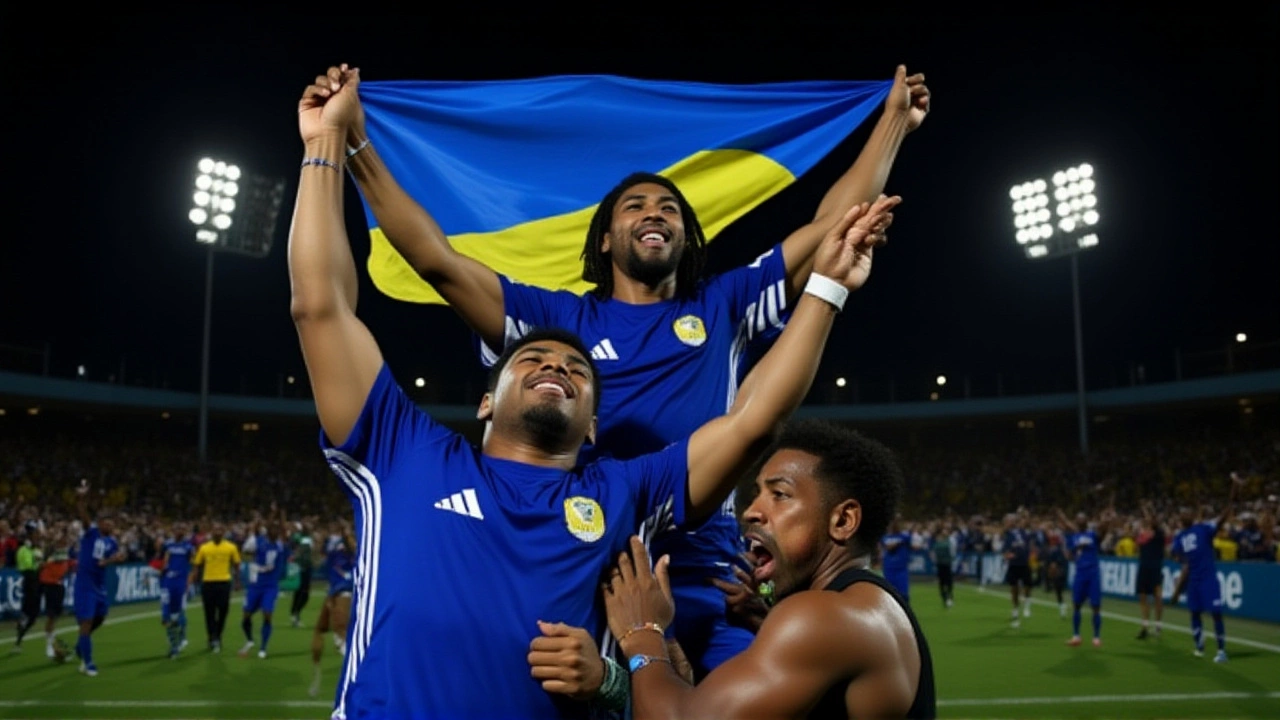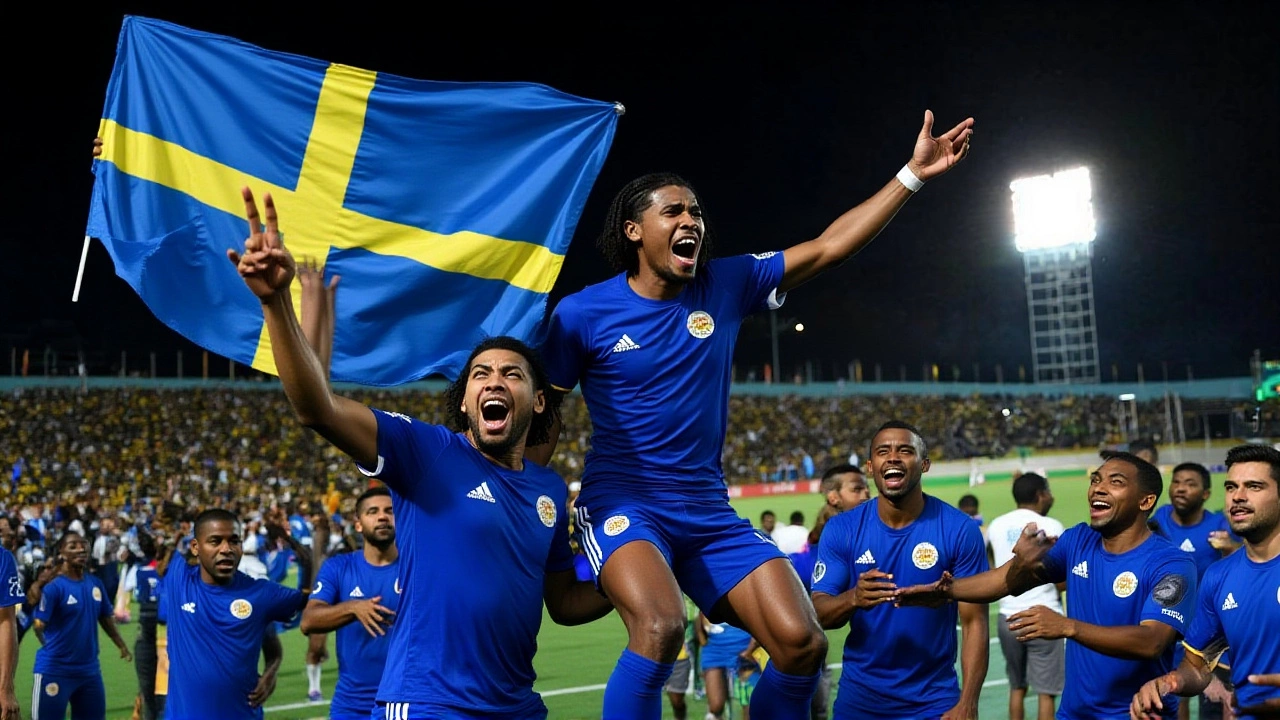On November 19, 2024, at the National Stadium in Kingston, Jamaica, a 0-0 draw didn’t just end a match—it rewrote football history. Curaçao, a tiny Caribbean island with fewer than 170,000 people, became the smallest nation ever to qualify for a men’s FIFA World CupCanada, Mexico, and the United States. The result? Pure, unfiltered magic. With seconds left on the clock, Jamaica’s John Russell was sent off after a second yellow for a 50/50 challenge, sealing Curaçao’s fate. Not with a goal. Not with a flourish. But with sheer, stubborn resilience.
How a Nation of 165,000 Outlasted a Powerhouse
It’s easy to forget that Curaçao isn’t a sovereign state—it’s an autonomous country within the Kingdom of the Netherlands. But on the pitch, it’s a force. The Curaçao Football Federation, based in Willemstad’s historic Fort Amsterdam, has spent 13 years building something no one thought possible. Before 2011, Curaçao players wore the Netherlands Antilles jersey. Now? They wear blue. And they’re going to the World Cup.
The journey wasn’t glamorous. No billionaire owners. No global TV deals. Just grit. They drew 1-1 in their previous Group B match. All they needed against Jamaica—the 2015 CONCACAF Gold Cup champions—was a draw. Jamaica, led by Premier League goalkeeper Andre Blake and striker Shamar Nicholson, controlled 62% of possession. They hit the crossbar. They had six shots on target. But Curaçao’s defense, anchored by Abel Tamata, held firm. Even when Blake charged upfield for a late corner, the ball fell to Cphus near the six-yard box. Tamata, 34, cleared it with his chest. The whistle blew. The island erupted.
The Ripple Effect: From Willemstad to the World
When the final whistle blew, fireworks lit up the sky in Willemstad. Street parties spilled into the harbor. A 72-year-old grandmother in Sint Anna danced in her slippers, clutching a faded 1990s Netherlands Antilles jersey. "I never thought I’d see this," she told a CBS Sports reporter. "My son played for the old team. Now my grandson will watch on TV in America. That’s legacy."
Curaçao’s population is just under half of Iceland’s when they qualified for the 2018 World Cup. Iceland’s story was inspiring—200,000 people, a volcanic landscape, and a national team that beat England. But Curaçao? They’re smaller. Quieter. Less funded. And now? They’re on the same stage.
The Ergilio Hato Stadium in Willemstad, with its 15,000 seats, has never hosted a World Cup qualifier this intense. The pitch is sandier than most. The stands are older. But the passion? Unmatched. The team, nicknamed De Leeuwen (The Lions), is coached by a Dutch tactician who prefers possession over physicality—a rarity in Caribbean football. Their star, 24-year-old winger Jair Tjon En Fa, plays in the Dutch second division. He’s not a household name. But he will be after June 2026.

Jamaica’s Heartbreak and the Cost of Near Misses
Jamaica’s Reggae Boyz had everything going for them: home soil, a passionate crowd, and a squad full of MLS and European-based players. But football doesn’t reward effort—it rewards results. And in the 89th minute, when Russell’s second yellow card was shown, their World Cup dream cracked open. Coach Theodore Whitmore, visibly stunned on the sideline, later said: "We played our hearts out. But sometimes, the universe doesn’t align."
Their failure to convert chances—especially Nicholson’s near-miss off the crossbar—will haunt them. For the first time since 2015, Jamaica won’t play in a World Cup. Their federation, based on Arthur William Street in Kingston, now faces tough questions: Did they over-rely on individual talent? Did they underestimate Curaçao’s tactical discipline? The answers will shape their next cycle.
What Comes Next? The Road to 2026
Curaçao’s World Cup journey isn’t over. They’re now in the final round of CONCACAF qualifiers, where they’ll face the likes of the United States, Mexico, and Canada. Their group stage opponents will be drawn in early 2025. But here’s the twist: they don’t need to win. They just need to survive. Their style—compact, disciplined, counter-attacking—is tailor-made for this stage.
They’ll train in the Netherlands during the winter months. Their players will fly between Europe and the Caribbean, juggling club duties and national team calls. The Curaçao Football Federation has already secured a $1.2 million grant from FIFA’s Development Program. They’re buying new kits. They’re hiring a sports psychologist. And for the first time, they’re broadcasting home games on national TV.

Why This Matters Beyond the Pitch
This isn’t just about football. It’s about identity. Curaçao’s people have long been overlooked—politically, economically, culturally. But on November 19, the world watched a nation of 165,000 outlast a country of 2.8 million. It’s proof that size doesn’t define potential. It’s proof that passion, organization, and belief can move mountains.
When the 2026 World Cup kicks off in June, Curaçao will march into stadiums in Toronto, Mexico City, and Miami not as underdogs. But as pioneers. As the smallest nation ever to reach football’s summit. And for a place where the streets are painted blue and the air smells of salt and souse, that’s more than a victory. It’s a revolution.
Frequently Asked Questions
How did Curaçao qualify for the 2026 World Cup with only a 0-0 draw?
Curaçao entered the final match of Group B needing only a draw to advance, thanks to their superior goal difference over Jamaica. After a 1-1 draw in their previous match, a tie in Kingston was enough to secure second place in the group. Jamaica needed a win to top the group and qualify directly, making Curaçao’s defensive performance decisive—even without scoring.
What makes Curaçao smaller than Iceland, the previous record-holder?
Curaçao’s population is approximately 165,000 (2023 estimate), while Iceland had around 340,000 people when they qualified for the 2018 World Cup. Though Iceland is geographically larger, population size determines the "smallest nation" distinction in FIFA records. Curaçao’s achievement is unprecedented because it’s not just smaller—it’s less than half the size of the previous record holder.
Is Curaçao a sovereign country, and why does it have its own team?
Curaçao is an autonomous country within the Kingdom of the Netherlands, not an independent nation. But FIFA allows territories with distinct football federations to compete separately. After the dissolution of the Netherlands Antilles in 2010, Curaçao’s federation was recognized by FIFA in 2011, granting them full membership and the right to field their own national team.
Who are the key players on Curaçao’s World Cup squad?
While the full roster won’t be finalized until 2025, key figures include defender Abel Tamata (34), a former Dutch youth international, and winger Jair Tjon En Fa (24), who plays for FC Dordrecht in the Netherlands’ second tier. Goalkeeper Jairzinho Hato, who replaced the injured Roderick Gomes during the Jamaica match, has become a fan favorite for his calm under pressure.
Where will Curaçao play their World Cup matches?
Curaçao’s group stage opponents will be determined in early 2025, but all matches will be held across the 16 venues in Canada, Mexico, and the United States. The team is expected to train in the Netherlands before departure and may request a base camp in Florida or Texas due to cultural and linguistic similarities with the Caribbean diaspora there.
How has Curaçao’s football infrastructure changed since qualifying?
Since qualifying, Curaçao’s federation has received a $1.2 million FIFA development grant and secured a $500,000 sponsorship deal with a Dutch bank. They’ve upgraded youth academies, hired their first full-time analyst, and begun broadcasting home games nationally. The Ergilio Hato Stadium is also set to receive new lighting and seating upgrades ahead of 2026, funded by local government and private donors.
